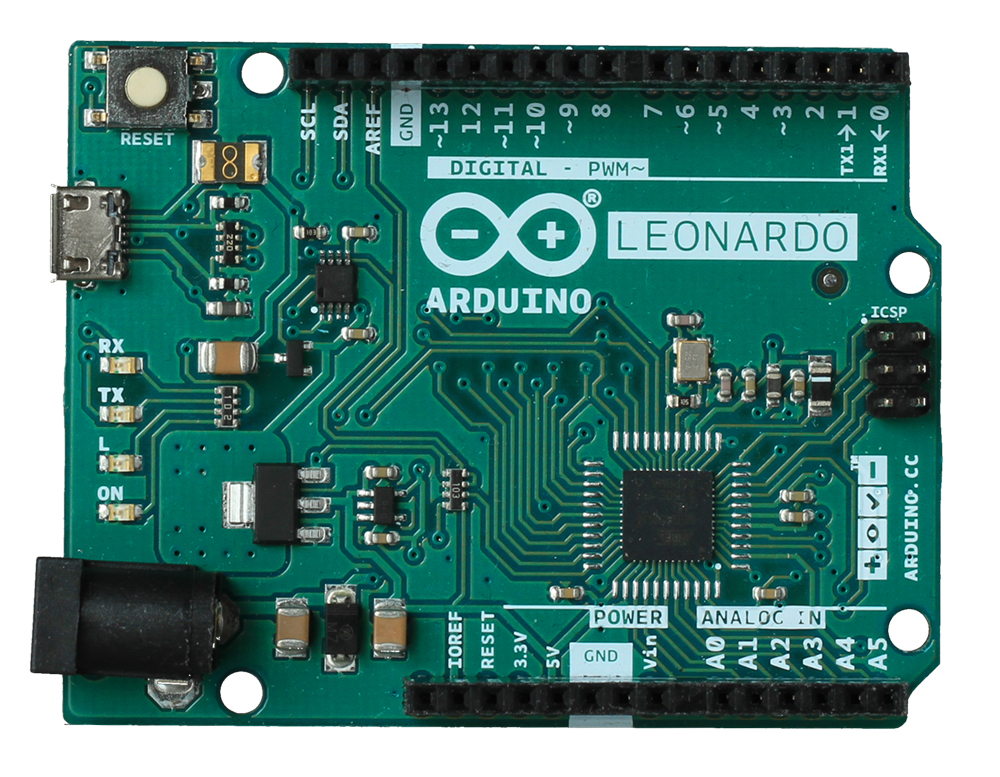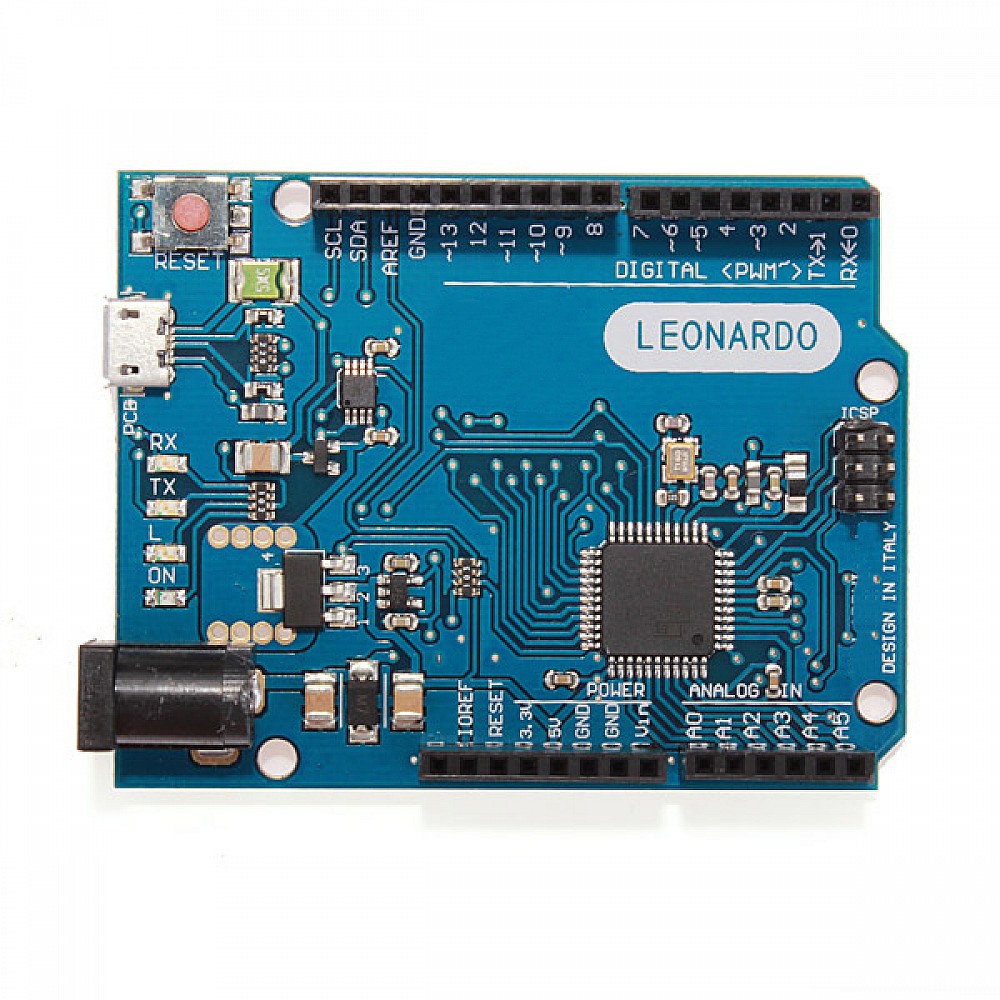
#Arduino leonardo full#
The chip also acts as a full speed USB 2.0 device, using standard USB COM drivers.
#Arduino leonardo serial#
The 32U4 also allows for serial (CDC) communication over USB and appears as a virtual com port to software on the computer. The ATmega32U4 provides UART TTL (5V) serial communication, which is available on digital pins 0 (RX) and 1 (TX). The Leonardo has a number of facilities for communicating with a computer, another Arduino, or other microcontrollers. See also the mapping between Arduino pins and ATmega32u4 ports. Typically used to add a reset button to shields which block the one on the board. Reset. Bring this line LOW to reset the microcontroller.AREF. Reference voltage for the analog inputs.There are a couple of other pins on the board:

By default the analog inputs measure from ground to 5 volts, though is it possible to change the upper end of their range using the AREF pin and the analogReference() function. Each analog input provide 10 bits of resolution (i.e. Pins A0-A5 appear in the same locations as on the Uno inputs A6-A11 are on digital i/o pins 4, 6, 8, 9, 10, and 12 respectively. Analog Inputs: A0-A5, A6 – A11 (on digital pins 4, 6, 8, 9, 10, and 12). The Leonardo has 12 analog inputs, labeled A0 through A11, all of which can also be used as digital i/o.When the pin is HIGH value, the LED is on, when the pin is LOW, it’s off. LED: 13. There is a built-in LED connected to digital pin 13.This means that if you have a shield that uses SPI, but does NOT have a 6-pin ICSP connector that connects to the Leonardo’s 6-pin ICSP header, the shield will not work. Note that the SPI pins are not connected to any of the digital I/O pins as they are on the Uno, They are only available on the ICSP connector. SPI: on the ICSP header. These pins support SPI communication using the SPI library.PWM: 3, 5, 6, 9, 10, 11, and 13. Provide 8-bit PWM output with the analogWrite() function.See the attachInterrupt() function for details. External Interrupts: 3 (interrupt 0), 2 (interrupt 1), 0 (interrupt 2), 1 (interrupt 3) and 7 (interrupt 4). These pins can be configured to trigger an interrupt on a low value, a rising or falling edge, or a change in value.TWI: 2 (SDA) and 3 (SCL). Support TWI communication using the Wire library.

Note that on the Leonardo, the Serial class refers to USB (CDC) communication for TTL serial on pins 0 and 1, use the Serial1 class. Serial: 0 (RX) and 1 (TX). Used to receive (RX) and transmit (TX) TTL serial data using the ATmega32U4 hardware serial capability.In addition, some pins have specialized functions: Each pin can provide or receive a maximum of 40 mA and has an internal pull-up resistor (disconnected by default) of 20-50 kOhms. Each of the 20 digital i/o pins on the Leonardo can be used as an input or output, using pinMode(), digitalWrite(), and digitalRead() functions.


 0 kommentar(er)
0 kommentar(er)
